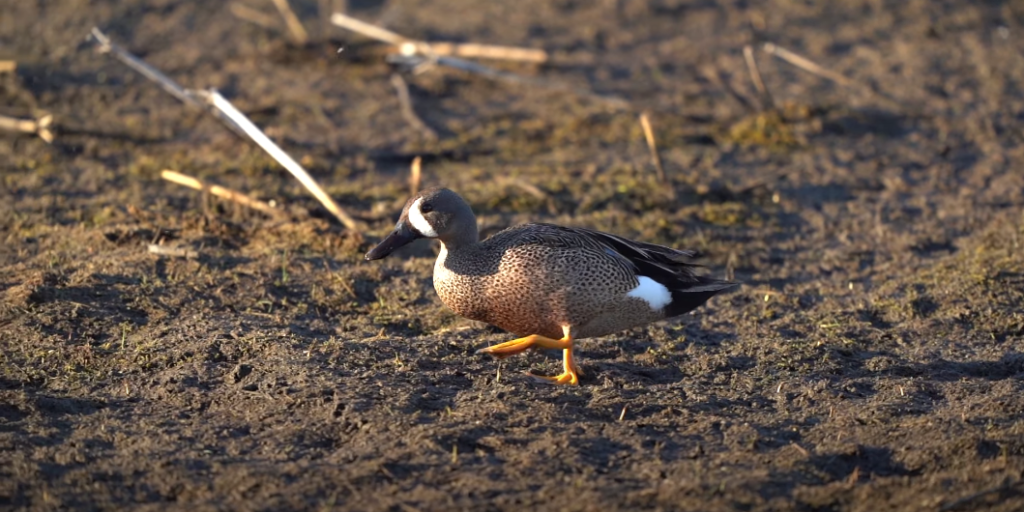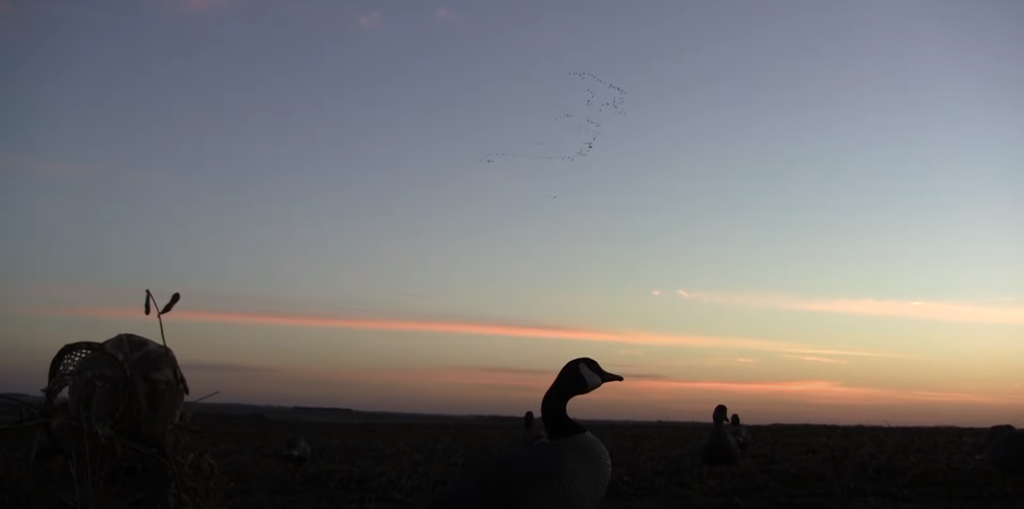Each year, waterfowl hunters across the United States head out to their favourite hunting spots in search of ducks and geese. They are usually armed with a shotgun loaded with at least one type of lead or steel shot. But what types of pellets can they use during these hunts? The answer is not so simple because there are different rules for each state. This blog post will cover the U.S. federal regulations for shotgun ammunition used to hunt migratory game birds, as well as provide information on which states allow certain types of pallet loads.
Table of Contents
What Types of Shotgun Pellets Are Allowed for Waterfowl Hunting in The U.S?
There are four main types of shotgun pellets used for waterfowl hunting in the U.S.: steel, bismuth, tungsten-polymer and tungsten-iron. Each type has unique advantages with some being better suited to certain habitats than others. The use of lead shot is banned by federal law for all migratory bird hunting nationwide because it can harm or kill birds that ingest spent shot when they feed on their prey after hunters have left the area following a hunt.

Lead alternatives have been developed that provide similar performance characteristics as lead shot shells while also providing benefits such as improved availability in wet environments found along coastlines where many ducks migrate during fall migration.
- Bismuth is a heavy metal alloy that has properties similar to lead. It’s denser than steel, but lighter in weight compared to a lead shot which allows bismuth shot shells to travel at higher velocities.
- Steel, also known as iron, averages one-third of the density of water and is very durable against bird impact when hunting turkeys or other large game birds where long-range shooting can occur before being close enough for a kill shot on larger animals.
- Tungsten alloy with nickel or iron, such as tungsten-polymer and tungsten-iron pellets respectively, are denser than lead but lighter than steel so they can be fired from 12 gauge shotguns at velocities similar to those of standard steel shotshells while maintaining higher energy levels upon impact compared to their lower velocity counterparts.
Why Lead Shots Are Not Allowed for Waterfowl Hunting in The U.S?
Lead ammunition has been forbidden in waterfowl hunting for quite some time and should be avoided at all costs. Lead shot is now banned for all waterfowl hunting nationwide. The U.S Fish and Wildlife Service (USFWS) instituted in 1991 a ban on using or possessing shells that contained more than 0.62 ounces of lead in any waterfowling area where migratory birds are present (Migratory Bird Treaty Act).
The primary concern with lead-based ammunition used to hunt waterfowl is its impact on wildlife health and mortality rates. Lead fragments can be ingested by ducks while feeding under the surface of lakes and ponds; the poisoned game doesn’t make it far before succumbing to illness/death which causes an increase in predation loss both directly through ingestion but also indirectly by triggering predator instincts causing them to abandon hunting grounds in search of healthier prey.

Lead poisoning can also occur from ingesting lead shot that has been left behind from previous hunts or from improperly disposing of spent shells which contaminate waterfowl feeding areas and nesting sites, resulting in a slow death by starvation for young migrating birds unable to fly due to neurological damage caused by the ingestion of toxic levels of lead.
To ensure compliance with federal regulations requiring non-toxic ammunition for hunting migratory fowl, hunters must only use approved types of shotgun pellets, such as steel (which contains nickel), bismuth, tungsten-iron alloys, or other suitable non-toxic materials when taking waterfowl. Shotguns used during duck season should be modified so there is no possibility of loading lead shots.
Why Are Non-toxic Shotgun Pellets Allowed and Recommended?
Non-toxic pellets are allowed because the USDA Wildlife Services have deemed them to be more humane. These pellets have been tested and found to be less likely to cause waterfowl death after being shot.
Pellets that don’t contain lead can expand or fragment in birds’ bodies, which has been determined by research to cause less damage and suffering than smaller pellets with higher penetrative power.
They are recommended because it is a legal requirement to use non-toxic pellets in some parts of the U.S. In addition, hunters are encouraged by wildlife services and conservation groups because it minimizes birds’ exposure to toxicants and increases their chances of survival after being shot.
More Information About Steel, Tungsten, and Bismuth Pellets for Waterfowl Hunting
There are different types of shotgun pellets that you can use when waterfowl hunting in the U.S. However, steel and tungsten pellets may be banned by some states because they might cause additional injury to animals if shot at them.
Steel shot for ducks is available in sizes BB, 1, 2 and sometimes even larger. It is commonly used for waterfowl hunting with 12-gauge shotguns or rifles chambered to fire shells of this size.
Shotgun pellets are made from steel because it has the least amount of density compared to other materials like lead. Lead shot damages animals’ tissue when they get hit by them at close range while steel shots cause more damage than lead on impact but penetrate deeper into an animal’s body without causing too much injury on the surface area which makes them suitable for long-distance shooting as well.
The main disadvantage of using tungsten alloy pellets over traditional steel ones is that tungsten might be banned soon due to its environmental effects. This type of pellet is made up of tungsten alloy and iron, which has a denser weight than steel. Tungsten pellets are more expensive than steel ones, but they can be used for both cold weather hunting as well as hot weather waterfowl hunting because these pellets remain buoyant in the cold waters too.
Bismuth alloy shot shells use inert metal that makes them suitable to fire at close range without causing any additional damage on impact, so it’s an ideal choice if you want to shoot saltwater game birds like brants or geese with your shotgun. Bismuth doesn’t cause lead poisoning, so hunters don’t have to worry about contaminating meat by handling bismuth shells, since it does dissolve into flesh.
Another advantage of bismuth shells is that they are environment-friendly, so you can use them for hunting waterfowl without any guilt. However, these pellets might not always be readily available since their production process isn’t as popular as steel or tungsten shot because it’s time-consuming and costly too.
Bismuth alloy shot shells come in different sizes ranging from BB to BBB with the larger number representing a smaller size pellet while B represents a large pellet. These are not very common but hunters who want pure lead free shotgun ammunition often go for this type of shell instead of other alternatives which cause more environmental damage.
FAQ
Are 3 shots good for ducks?
Yes, it is very effective.
Are shotgun slugs allowed to be used while hunting waterfowl?
No. Slugs are not permitted when you’re out duck hunting with a shotgun, but if you’re using a muzzleloader or a rifle the use of slugs is allowed.
Is lead shot still available?
Yes, most lead shots are now called “traditional” or “toxic.”
Where do you buy non-toxic shots?
Non-toxic shots are available at most sporting goods stores or can be purchased through your local game warden.
Is it illegal to kill a duck?
No, but it is illegal to shoot at one if you are not within range of your shot.
Why is tungsten shot so expensive?
Tungsten is a rare metal, so it isn’t mined in great quantities.
What is the best non-toxic shot?
Tungsten, bismuth-tin alloy, and steel are the best non-toxic options.
Should you carry more than one calibre or gauge?
Yes, many hunters carry a few different types of shotguns with them.
Is it legal to hunt ducks over decoys?
No, you can’t use an automatic or semi-automatic shotgun in the U.S., and must also wait for at least 30 minutes after shooting before hunting again.
When a shotgun fires multiple projectiles what is it called?
A shotgun that fires multiple projectiles is called a “repeater.”
Useful Video: Duck Hunting 101: What You Need to Know!
Final Thoughts
It’s important to check the regulations for your state on what type of pellets are allowed. To be safe, stick with a Steel or Bismuth shot that has a higher density than water and will sink quickly after being fired. It’ll also reduce lead exposure due to ingestion by birds eating dead prey poisoned from lead contamination in the soil. This is why it’s best not to use steel shot when hunting migratory game birds like ducks and geese as they’re more likely to ingest them off carcasses (or wounded targets) if their feeding habits include picking at the mud.
Now you know what type of pellet is allowed? If you still have questions, contact your local game warden and they’ll be more than happy to answer any additional inquiries.
We hope you found this article helpful. Enjoy your waterfowl hunting!






Leave a Reply